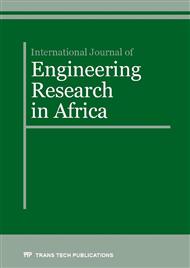[1]
G. Edwards, K. Stiller and G. Dunlop, Acta. Mat, 46 (1998) 3893-3904.
Google Scholar
[2]
C. Panseri, and T. Federighi, J. Inst. Met, 94 (1966) 99-107.
Google Scholar
[3]
M. Murayama, K. Hono, M. Saga and M. Kikuchi, Mater. Sci. Eng., A Struct. Mater, A250 (1998) 127-132.
Google Scholar
[4]
M. Kanno, H. Suzuki and Y. Shiraishi, Japan. J. Inst. Light. Met, 28 (11) (1978) 553-557.
Google Scholar
[5]
W. Evans and J. Ancote, Proc. 3rd Int. Aluminum. Extrusion Technology Seminar, Atlanta, 1 (1984) 53-59.
Google Scholar
[6]
K.V. Chuistov, Aging of Merallic Alloys. Naukova, Kiev (1985).
Google Scholar
[7]
H. Hatta, S. Matsuda, H. Tanaka, H. Yoshida, Inst. Mater. Engi. Australasia, Materials Forum, 28 (2004) 564-569.
Google Scholar
[8]
C. Marioara, S. Andersen, J. Jansen and H. Zandbergen, Acta Mater. 51 (2003) 789-796.
Google Scholar
[9]
T. Honma, K. Matsumoto, Y. Nagai, M. Hasegawa, and K. Hono, Inst. Mater. Engi. Australasia, Materials Forum, 28 (2004) 494-500.
Google Scholar
[10]
Nicoud, J.C. Processing of Aluminium Alloy Electrical Conductors. GB-Patent, 1(1976), 511, 087.
Google Scholar
[11]
Herrmann, S., and Gold, EThe Electrical Conductor of an Aluminum Alloy. Patent EP1. (2002), 201, 779 A1.
Google Scholar
[12]
Chia, E.C., and Schoerner R.J. Method for Manufacturing an Aluminum Alloy Electrical Conductor. US-Patent, 4(1980), 234, 359.
Google Scholar
[13]
Karabay, S Mate. Des, 29(2008) 1364–1375.
Google Scholar
[14]
Zidani, M., Messaoudi, S., Dendouga, F., Baudin, T., Derfouf, C., Boulagroun A. and Mathon M.H., Acta Physica Polonica, 123(2013) 470-472.
DOI: 10.12693/aphyspola.123.470
Google Scholar
[15]
Zidani, M., Messaoudi, S., Dendouga, F., Baudin, T., Derfouf, C., Boulagroun A. and Mathon, M.H., Matec web of conference, 5(2013), 1-3.
DOI: 10.1051/matecconf/20130504004
Google Scholar
[16]
Zelin, M.G., Yang, H.S., Valiev, R.Z. and Mukherjee, A.K., Metall. Trans., (1993)417-424. Mulazimoglu, M.H., Zaluska, A., Paray, F., Gruzleski J.E., Metallurgical and Material Stransactions, 28(1997), 1289.
DOI: 10.1007/s11661-997-0265-5
Google Scholar
[17]
Farh. H, Guemini. R, Serradj. F, Djemmal. K., Turkish Journal of Physics., 34 (2010) 117-122.
Google Scholar
[18]
Zidani, M., Dendouga, F., Messaoudi, S., Bessais, L., Hadid. M.D., Derfouf, C., Helbert A.L. and Baudin,T. (2014).
Google Scholar
[20]
Zidani, M., Hadid, M.D., Messaoudi, S., Dendouga, F., Bessais, L., Baira, F., Bayarassou, M., Helbert, A.L., Mathon, M.H. and Baudin,T. (accepted 2015) The Drawing Process of the Wires of Copper and Aluminium Evolution of the Microstructure and (Mechanical/Electrical) Properties. Publishing in Thomson Reuters.
DOI: 10.12693/aphyspola.123.470
Google Scholar
[21]
Olafsson, P. and Sandstrm, R. Mater SciTechnol, 17, (2001) 655–62.
Google Scholar


